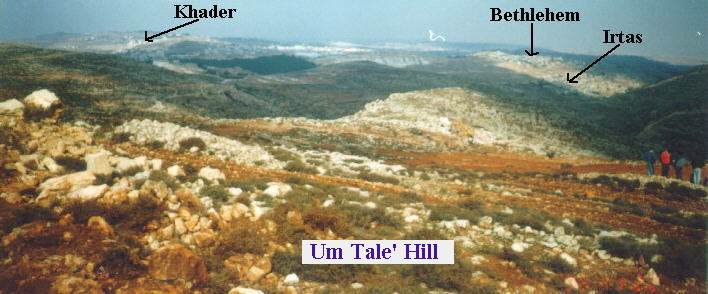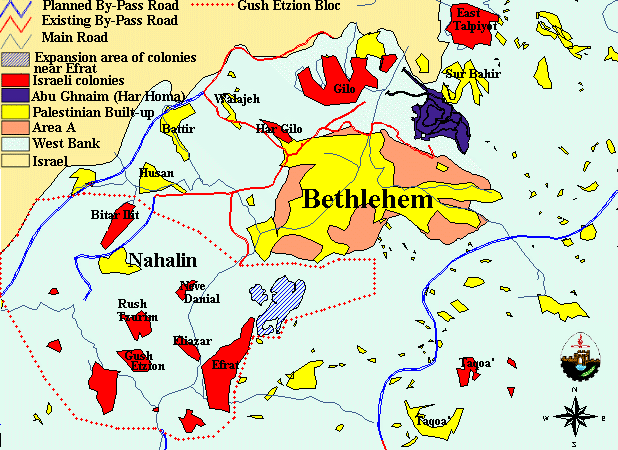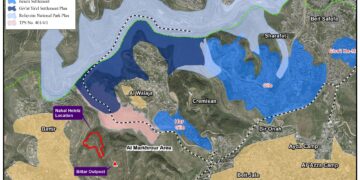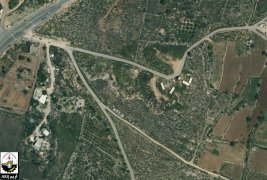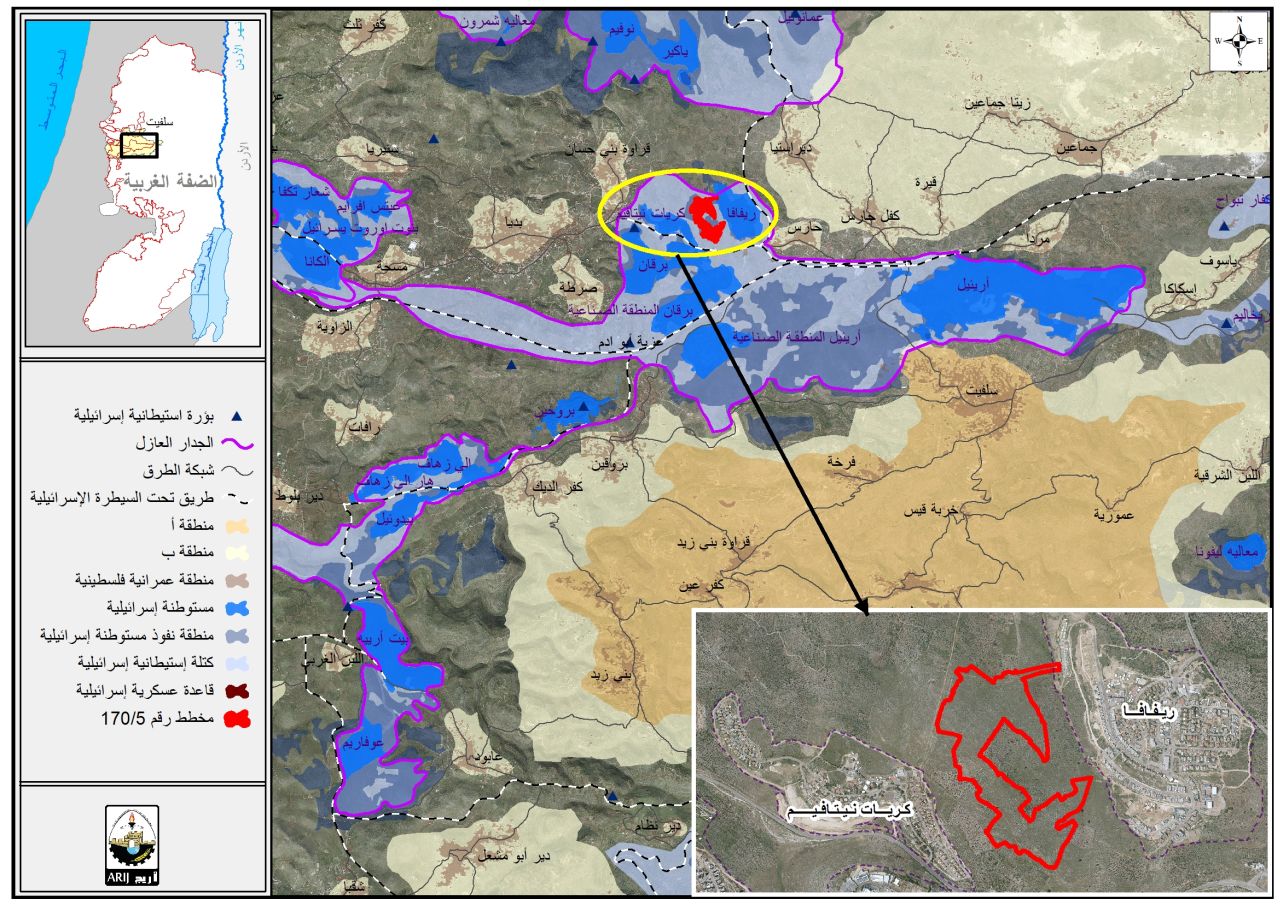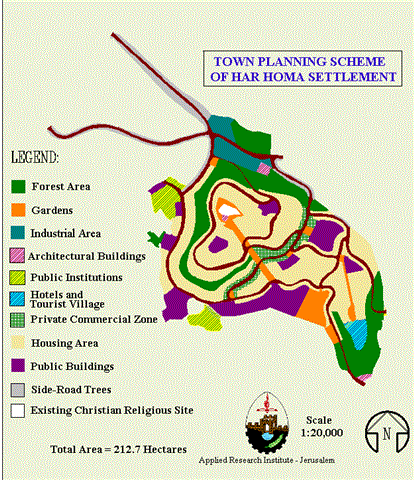On 12 March 1997, the Israeli bulldozers resumed their work to open a road to reach the hill of Um Tale', south of Bethlehem city, defying a court order to restrain from work at the site. The Israeli government plans to construct a new Israeli colony, Givat Hazayit, at this site. The new colony is located a few kilometers from the Israeli colony of Efrat ( Figure 1 and 2).
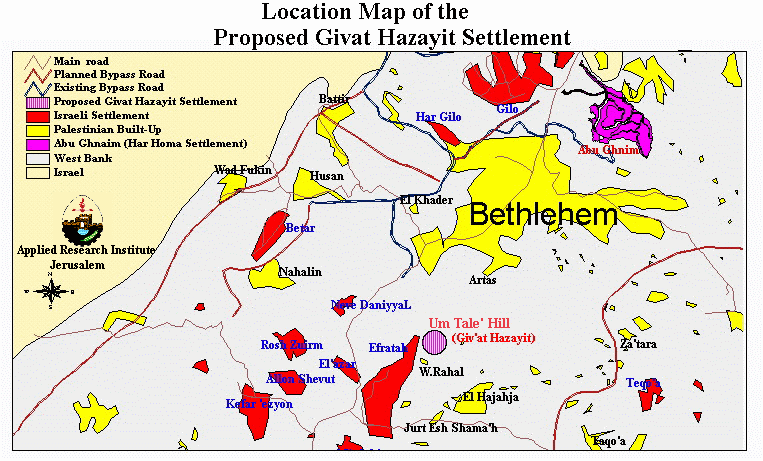
Figure 1: Location map of the proposed colony of Givat Hazayit
Figure 2: Aerial photo of Um Tale' hill, the location of the proposed colony of
Givat Hazayit, and part of Efrat colony
Construction on the 180 hectares of Um Tale' Hill is an Israeli attempt to encircle Jerusalem with colonies, in accordance with the Israeli plan of 'Greater Jerusalem' (Figure 3). ).
Figure 3: Efrat and the Israeli plan for 'Greater Jerusalem'
Israeli plans for the new colony include the construction of 267 housing units and several public buildings (Table 1).
|
Table 1: Planned Building Areas on Batn Um Tale' Hill |
|||
|
Land Use |
Housing Units |
Area in acres |
Area in Hectares |
|
Public Buildings |
3.1 |
1.24 |
|
|
Educational Buildings |
10.7 |
4.29 |
|
|
Public Services |
5.1 |
2.03 |
|
|
Housing Area |
267 |
19.1 |
7.62 |
|
Housing Zone A |
72 |
8.2 |
3.29 |
|
Housing Zone B |
0 |
0 |
0 |
|
Housing Zone C |
24 |
1.5 |
0.59 |
|
Housing Zone D |
147 |
8.5 |
3.4 |
|
Housing Zone E |
24 |
0.8 |
0.34 |
|
TOTAL |
267 |
38.0 |
15.18 |
The land of Um Tale' is a private property which belongs to Palestinian villagers from Irtas and Al-Khader, who have proof of ownership dating back to the time of the British Mandate. In 1981, Israel illegally and unilaterally declared the land as 'state property'. The Israeli High Court rejected the land owners' petition objecting to the confiscation of their lands. Similar petition were also rejected in 1991 and 1996 as the Israeli court decided that the proof of ownership of the land was not sufficient to stop land confiscation and colonizing activities.
In cases where Israel declares the land as 'state land,' it is the responsibility of the land owners, rather than Israel, to prove ownership rights. Furthermore, Israel enforces several laws in the West Bank which dictate that land owners must provide unquestionable proof that the land has been cultivated continuously for the past ten years. If this requirement is not fully satisfied, Israel declares the land 'state land' to be used for public purposes. 'Public purpose' traditionally implied the use of the land for the sole benefit of Israeli Jews. In the case ofUm Tale', the land is rocky and difficult to cultivate. It has been, however, used by its owners for grazing purposes (figure 4). ).
Figure 4: A view of Bethlehem, Irtas, and Al-Khader from the top of Um Tale' hill
The colony of Givat Hazayit is only one of three sites which are included in the Efrat colony Expansion Planning Scheme 5/410. The expansion plans include the expropriation of 180 hectares (450 acres) of land belonging to the villages of Irtas and Al-Khader, and the construction of 1,026 housing units, of which 267 are in Givat Hazayit. The second site, which will be called Givat Yitmar, will contain 397 housing units and has a total built-up area of 23.6 hectares (59.0 acres). The third site, which will be called Givat HaDajan, will contain 362 housing units and has a total built-up area of 25 hectares (62.5 acres).
The expansion of Efrat colony is one of many projects which will lead to a large settlement bloc in the southern part of Bethlehem, known as Gush Etzion bloc, which will house over 35,000 Israeli settlers (Figure 5). Such bloc will create facts on the ground which will enable Israel to carve this area from the West Bank and annex it to Israel. This measure will diminish the area needed for the sustainable development of Bethlehem and eliminate large stretches of agricultural and grazing areas which Palestinian farmers depend on as a major source of income. ). Such bloc will create facts on the ground which will enable Israel to carve this area from the West Bank and annex it to Israel. This measure will diminish the area needed for the sustainable development of Bethlehem and eliminate large stretches of agricultural and grazing areas which Palestinian farmers depend on as a major source of income.
The personal story of a family which owns land confiscated for the expansion of Efrat (Al-Quds Newspaper, Saturday 14 February 1996, no. 9808).
Prepared by:
The Applied Research Institute – Jerusalem





